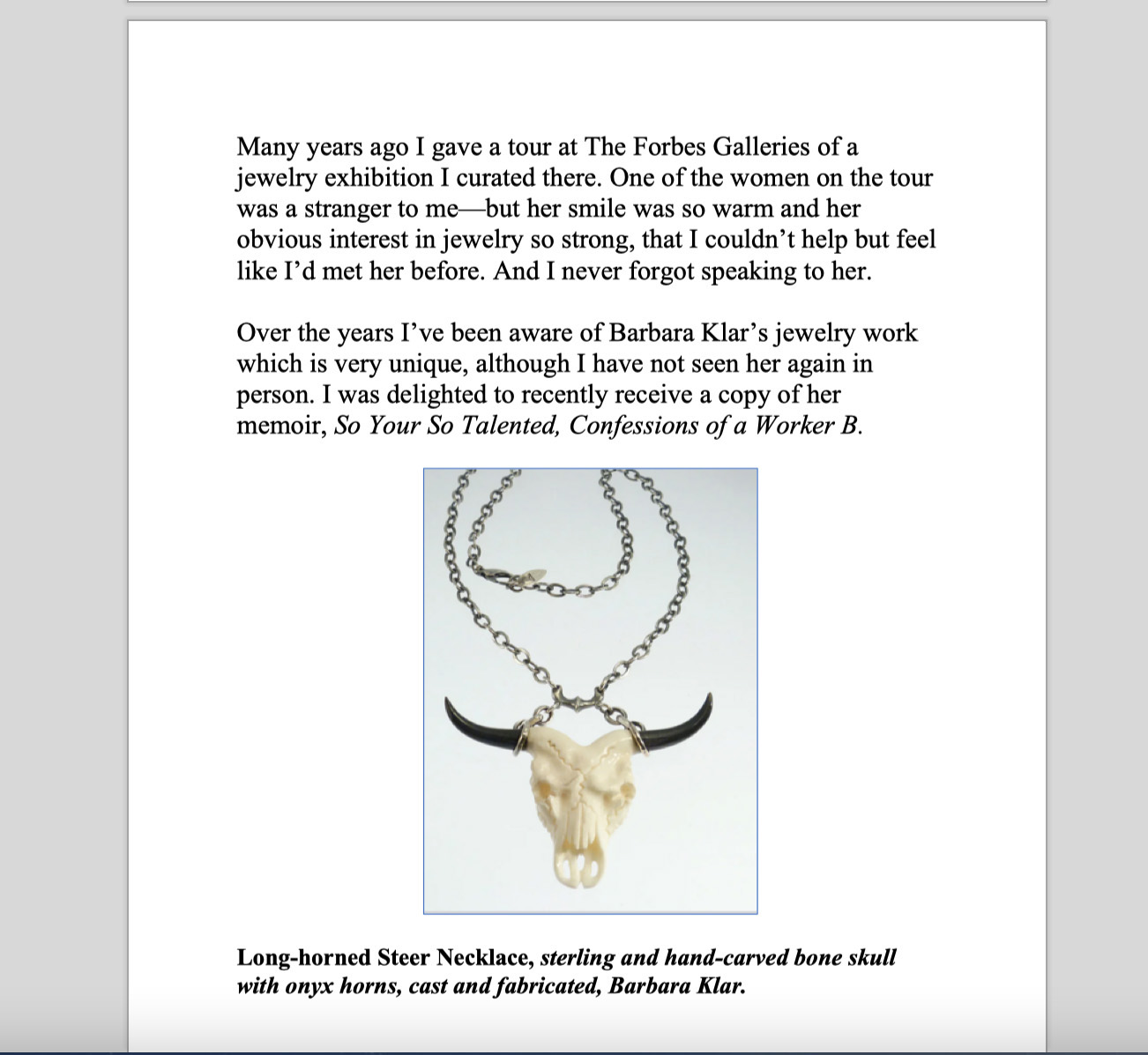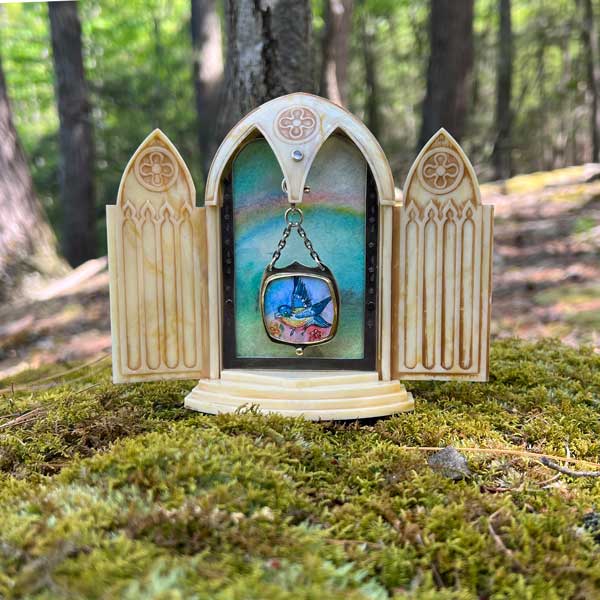Above: Photo by Man Ray, with his wife Julia wearing a vintage Balangandan Necklace
The Charms on my Balangandan Necklace:
I mimicked the original shape of the silver plate from which the charms hang to give reference to the ships in which the enslaved Africans traveled to the New World. This shape, to me, also represents the sea of life and the
Orisha Yemaya. The opals and moonstones represent the dreams we hold as individuals on our journey. The Aladdin's Lamps on either side of the holder represent spirits that watch over us.
Top Row: (left to right)
1.) The articulated mermaid.Vintage Silver Charm.Because I
always wanted to see, if not be, a mermaid.
2.) Vintage Silver Chalet charm. We all deserve the home of our
dreams.
3.) Motorcycle Boot. To kick some ass when we need to.
4.) Baby Shoe. The hope of a new life.
5.) Vintage dice charm. Silver and Acrylic. Because sometimes a
little luck is involved.
6.) Vintage silver pickaxe. Because sometimes you have to keep
chipping away on something until it gives way.
7.) Vintage Silver Hope Chest. Because we collect things and store
them in our hearts.
8.) My wisdom tooth from bone loss. Silver. One of the things I’ve
lost along my journey.
Bottom Row (left to right)
1.) Vintage Sewing scissors in a leather worn sheath. Because there
are things we need to mend or cut out of our lives.
2.) Silver Chicken Foot Charm. A nod to Santeria, religious beliefs
and magic.
3.) Vintage lenses holding a silver screen with which I’ve embroidered a cracked heart.
Because sometimes our hearts break.
4.) Vintage Mother Of Pearl Charm. (see above)
5.) Vintage Silver and Mother or Pearl Baby Rattle. Because
sometimes we need to entertain and distract our children, or
even ourselves.
6.) Vintage Silver Knight in Shining Amor. Because we all want to
be saved or find “the one”
7.) Vintage Painting on glass set in Silver. Because I have dreams
of a city under the sea where I can live peacefully.
8.) Vintage carved wooden Shoe Charm. Because everyone needs to walk a mile in another persons shoes.
Above: My Balangandan Necklace as worn by my talented friend, musician, and writer, @felice_rosser
Balangandan as worn by Maria.
******
Afro-brazilian Amulet
March, 2016
From the Museum of Ethnology,
As the indigenous peoples who worked on the Portuguese colonial plantations in
Brazil died out or fled, they were replaced by African slaves, who brought with
them elements of their home cultures. The African territories they came from, a
number boasted fairly advanced metallurgical industries.
The balangandan is a religious object typical of Brazil, and particularly of the state
of Bahia, that represents the encounter between African and European cultures. In Portuguese, it is called a penca, or bouquet, while the name balangandan is an onomatopoetic word meant to recall the sound made by the object's dangling metal baubles
Consisting of a number of charms strung on a common fastener hung from a
chain, the balangandan traces its roots back to the 17th century, though its more
general use dates to the 18th-19th centuries. Worn by women of African descent,
the balangandan most frequently adorned the thick chain belts that hung about
slaves' waists, though on special occasions, it might be attached to the
wrist. When not in use, it hung in the house near the door. Originally made of
silver, the balangandan represented significant monetary value and was not
infrequently presented by plantation owners to favored slaves. Each
balangandan was unique, having been composed to reflect the specific life path of
its wearer. Its charms included religious symbols that could be interpreted
simultaneously as Christian in origin, or as representing certain African
gods. Other charms were intended to impart good fortune, happiness, prosperity,
or good health, while a third type was selected out of gratitude for - and in
commemoration of - having survived some misfortune, such as an accident or
illness. The function of the balangandan was in some respects similar to that of a
modern charm bracelet.
The charms of the balangandan frequently depicted plants or fruits such as the
pomegranate, symbolizing wealth or fertility. One common motif was that of the
gourd vessel or dipper, which a number of African cultures used as a symbol for
the female womb. Another was that of a hand posed in what is known as the 'fig'
gesture, or figas, with the thumb protruding from between the curled index and
middle fingers. Originally a Mediterranean symbol used to impart fertility and
ward off evil spirits, the figas is still a very popular symbol in Brazil today. The
fastener on which the charms were strung was representative of the ships that
brought the slaves to the New World, the birds that sat on either side symbolizing
the continents of Africa and the Americas.











































